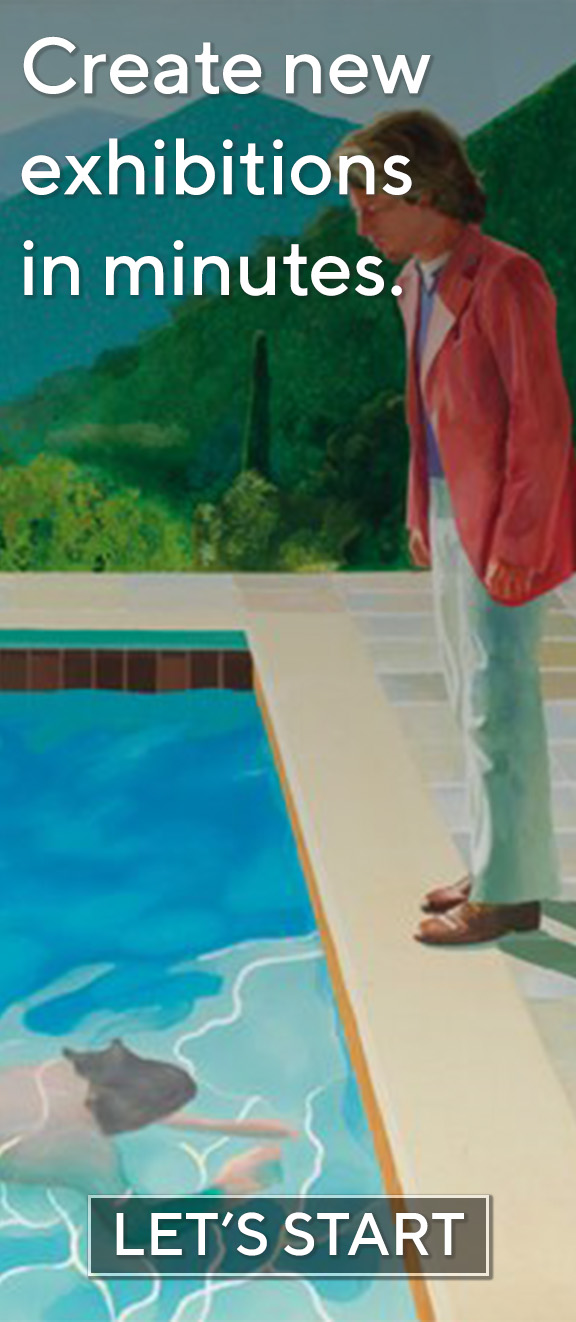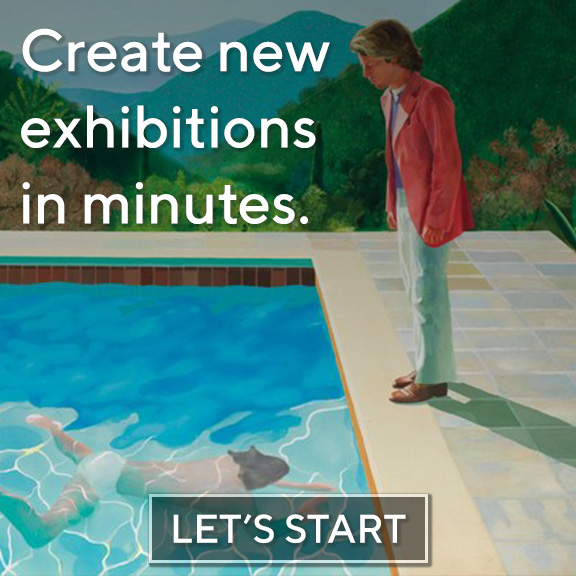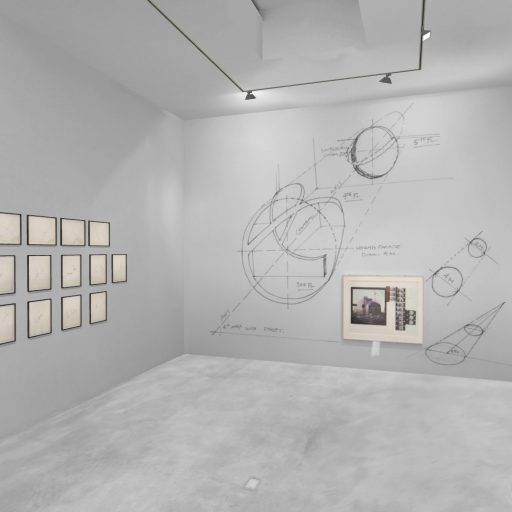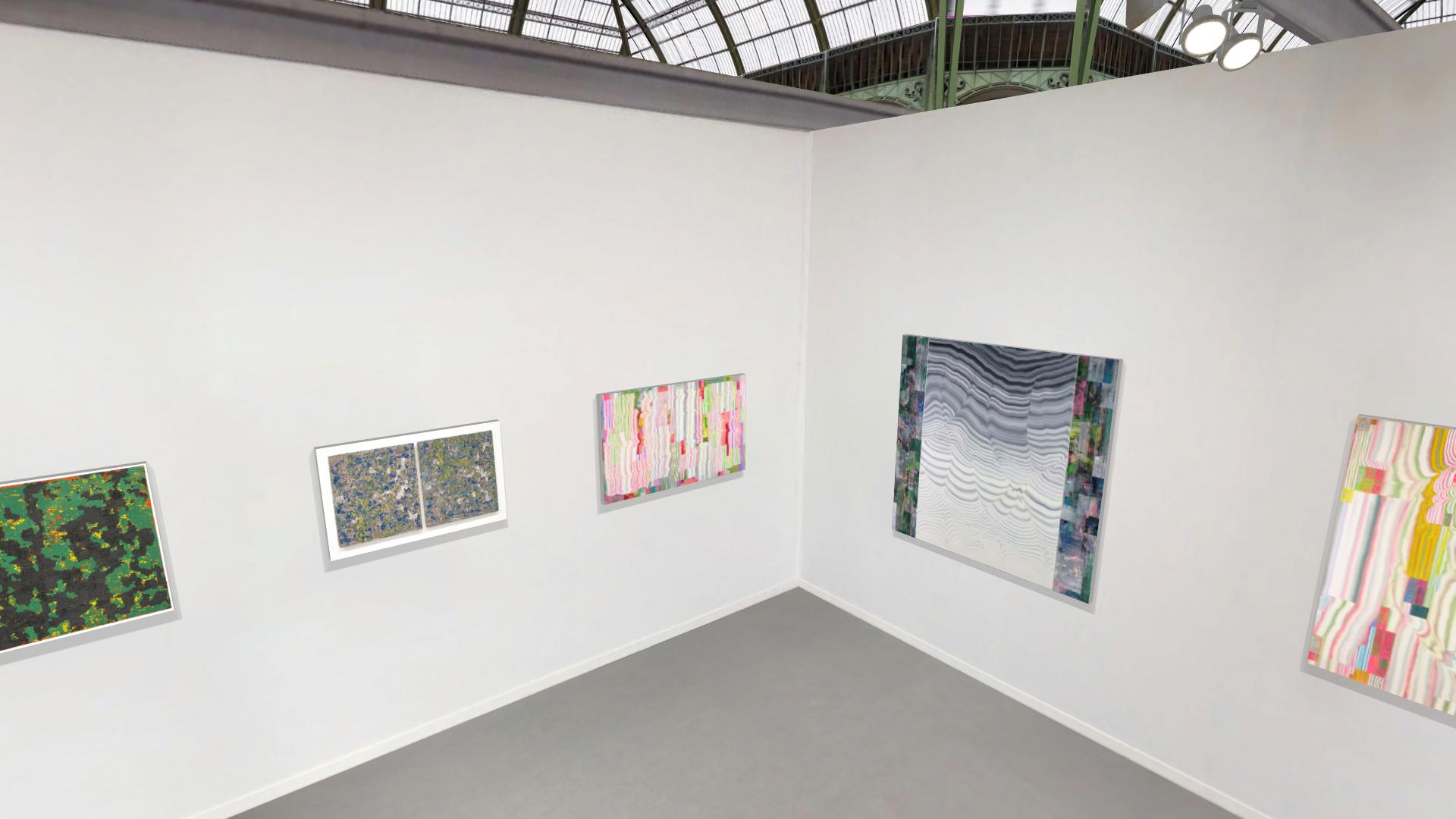
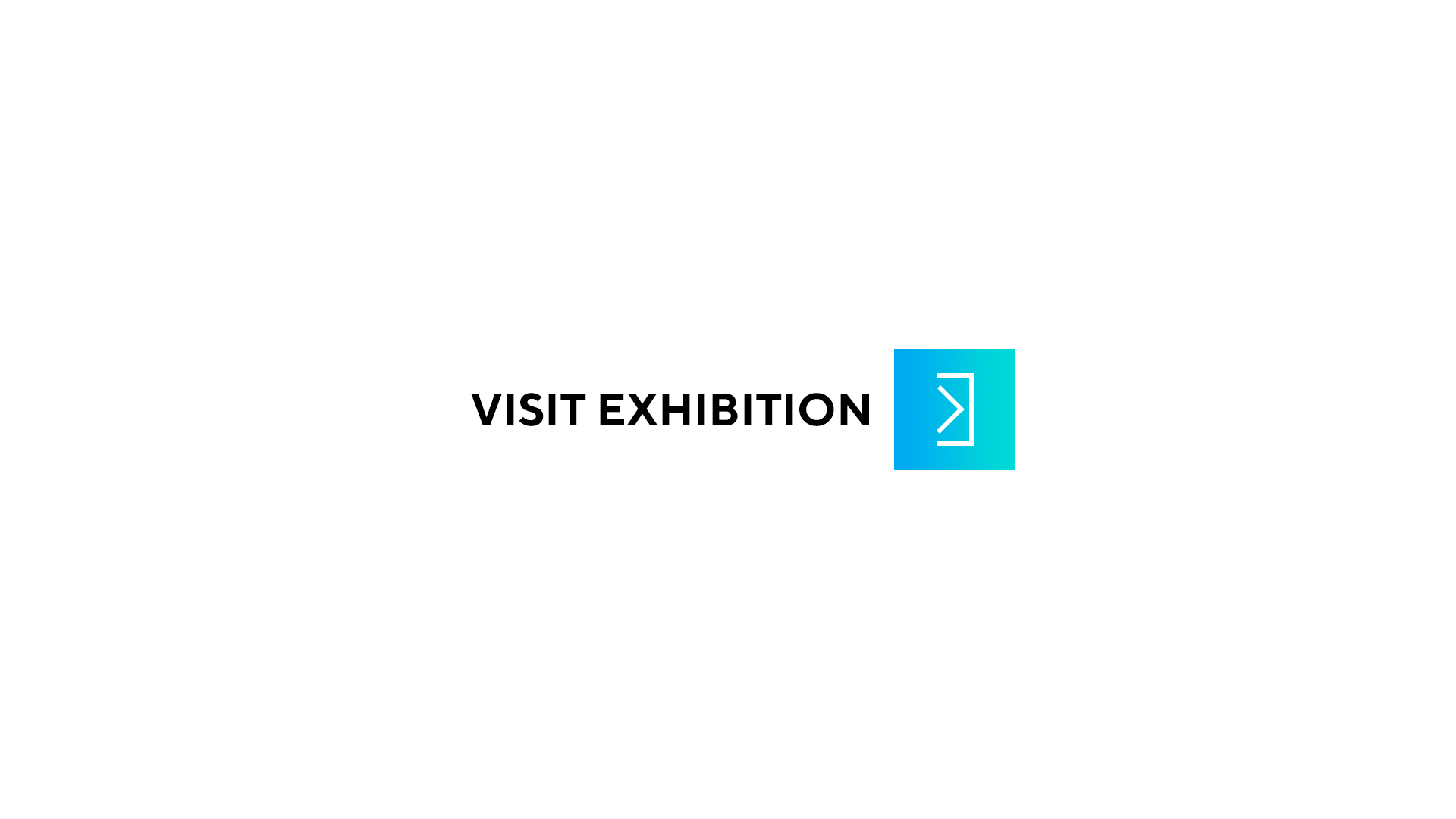
Kiyoshi NSAKAGAMI had a memorable solo show in Art Paris last year. Rainer Gross and Kim Young-Hun's are new artists in Art Paris. Kiyoshi Nakagami is The living master painter of light in painting. Rainer Gross is the master painter with his textural Contact Paintings. Kim Young-Hun''s paintings perfectly represent our ... more >> Galerie Richard presents paintings established artists Rainer Gross, Kim Young-Hun, Kiyoshi Nakagami, in Art Paris 2020.
Kiyoshi NSAKAGAMI had a memorable solo show in Art Paris last year. Rainer Gross and Kim Young-Hun's are new artists in Art Paris. Kiyoshi Nakagami is The living master painter of light in painting. Rainer Gross is the master painter with his textural Contact Paintings. Kim Young-Hun''s paintings perfectly represent our transition from the analogical to the digital world.
Galerie Richard presents paintings by three established and mid-career artists Rainer Gross, Kim Young-Hun, Kiyoshi Nakagami in Art Paris 2020.
Rainer Gross’s “Contact Paintings - Twins” are a definitive unique achievement in the history of painting. As their name implies, the compositions encompass two painted surfaces that the artist presents as a diptych, each panel imprinting on and mirroring the other. With the modesty of a philosopher, Gross admits that he controls the general composition of these unique pieces but insists that nature makes the details. The artist sometimes selects one of the two panels and brings his personal touch by adding one or two brushstrokes. Recently Rainer Gross has created quadriptychs with the same process.
Gross’s creation process is alchemic. He superimposes between six and ten layers of different-colored pigments suspended in water on one canvas. These are neither a solid color nor a pattern, but each layer covers the last completely. Next, he applies an approximately 1/8-inch-thick layer of paint on another canvas of equal size, pressing the two canvases together by hand and leaving them to “cure” for two hours. Gross then pulls the canvases apart, revealing the parts of the surface that have adhered to the other. If the artist can conceive the general composition, the revealed details are completely unpredictable. Gross hangs one of the two paintings upside down, confusing the viewer by escaping obvious symmetries.
A deeper understanding of Gross’ paintings requires the viewer to consider the challenges entailed in becoming a painter in 1970s Cologne when the ideology of “The End of Painting” professed by Joseph Beuys at the Kunst Akademie Düsseldorf became dominant among the art world’s “elite.” Being a painter meant thinking about the specificities of the medium and new ways to push it forward.
From figuration to abstraction, Gross’ series share one common trait: they reveal every layer of paint and texture. From sticking kitsch canvases on his paintings and superimposing geometrical lines on figurative subjects, to the “Twin Paintings” and the “Contact Paintings,” his work has always been a play of visible superimpositions using various layers of paint.
The artist controls the original first painting; after that, the piece is altered by the pressure of the additional canvas which unpredictably partially removes the pigments. For the artist, it must be a wonderfully surprising feeling to create a work which in many ways does not depend solely on him. The unexpected parts of the process bring a sense of infinity. In this aspect, it is interesting to think about Gross’ work in context with contemporary artists such as Kiyoshi Nakagami and Jeremy Thomas, who never claim to have total control of the creative process and is happy to discover how natural processes interact in the final result.
Rainer Gross was born in Köln, Germany in 1951. He has lived and worked in New York City for 45 years. In 2017, Gross was included in the Beijing Biennale as a representative of Germany. In 2012, the Museum Ludwig (Koblenz, Germany) held a four-decade survey of his paintings. Other notable national and international exhibits include the Musée Cantonal des Beaux-Arts (Lausanne, Switzerland), Krannert Art Museum and Kinkead Pavilion (Champaign, Illinois), and Kunsthalle Emden (Emden, Germany). Gross's paintings are housed in numerous public collections, including the AT&T Corporate Art Collection, the Cohen Family Collection, the Hirschhorn Collection, the UBS Union Bank of Switzerland, and the Lowe Art Museum. His work has been reviewed by the New York Times, Art in America, ArtNews, The Brooklyn Rail, The Boston Globe, and others.
Kim Young-Hun applies ancestral techniques from traditional Korean painting to represent abstract images inspired by digital screen disturbances. By using both the painter's classic color palette and the hyper-saturated colors of digital screens, he bears witness to the mental and visual universe of a generation that has passed from an analog to a digital world.
As a child, watching black and white television with his parents, he was fascinated by the distorted images on the television screen during violent storms. The controlled tremors of his brush movements, rhythm breaks, distortions, are all references to these interferences on screens. His paintings possess this disruptive energy of forms, an energy that also comes from the use of contemporary, digital, and saturated colors, such as roses and greens, particularly in the paintings of 2018. The most recent paintings made in New York have more white and light sections, more soothing, going as far as his first monochrome painting.
Nevertheless, these paintings are visual oxymorons describing quiet violence and contemporaneity in the continuity of ancestral techniques. Kim Young-Hun is inspired by a traditional horn painting technique called Hyukpil, which consists of using a single layer of paint with a large brush covered in several colors in a single continuous movement. Each hand tremor becomes a permanent trace. These modulatory lines may also suggest movements of nature, such as cloud formations or waterfalls, conscious and unconscious references to traditional Korean landscape paintings. For this reason, his paintings can also inspire quiet and meditative contemplation.
In addition, these fluid brush lines contour rectangular blocks of colored masses of classic, more sober colors, providing stability to the composition that the brush lines must contour. The artist places these geometric blocks first on the blank canvas. With reference to the theories of chaos, they could be considered as the initial conditions. The analogy is relevant insofar as the artist relies on them to design his brush movements with a powerful determinism.
The advent of the digital revolution is the defining event of this generation of artists and Kim Young-Hun translates it visually by making it part of the history of painting.
Kim Young-Hun (born in 1964 in Nonsan, South Korea) lives and works in New York and Seoul. He is a graduate of Chelsea College of Art and Design and Goldsmiths College, both in London. Kim has exhibited internationally in Europe, Asia, and recently in the United States with more than sixty group exhibitions and more than ten solo exhibitions. His paintings are in the collections of the Art Bank-National Contemporary Art Museum, Seoul, Government Art Bank-National Contemporary Art Museum, Seoul, Bank of America, New York, The Arts Club, London, Zaha Museum, Seoul, Sung-Kok Art Museum, Seoul, Samsung Museum of Art Leeum, Seoul, Kolon Group, Seoul, KOEX Kimchi Museum, Seoul.
“As a painter, there is nothing more difficult to represent than light. The ones who can do that are the greatest painters, greatest artists.” - Kiyoshi Nakagami
The audience is drawn to focus on the disposal of light in the painting, its density which varies from one painting to the other, and of course its dispersion within the dark space. The light spreads through a series of perfectly, sumptuous grades. Below the focal point of light, the light must cross an undefined, vaporous matter. In this show, you can see paintings with two vaporous matter instead of one. Youn can also see similar paintings with a similar composition but with a very different intensity and contrast of light. His ability to beautifully reproduce the diffusion of light in a painting is unrivaled.
His first exhibition in New York in 2012 was reviewed for the first time in Artforum by Donald Kuspit: «Accordingly, Nakagami «paints» by laying his acrylic on the canvas, moving it this way and that, and allowing gravity to move the pigment, which he has «enriched» with gold mica. The resultant works filled with meticulous ripples and evoking cascades of light bear no trace of the paintbrush. This absence of painterly gesture is also suggestive of Neuman’s work, reminding the means by which he attempted to unencumber the experience of pure color. Likewise, for Nakagami, the removal of the maker’s hand is meant to facilitate meditative contemplation (1).
Because he considers that human being does not rule Nature, he allows natural processes to develop in his paintings. These perfectly detailed paintings are made without the use of a paintbrush. «Nakagami does not reproduce the light of the natural world. The light of his paintings exists only in painting. The artist’s awareness of time in the concentrated moment in which light is made manifest is closely associated with the surprise of encountering something ephemeral and sublime» (2).
Nakagami was born in Shizuoka in 1949. His work is part of the collections of The National Museum of Modern Art in Tokyo, The Art Museum in Yokohama, The Art Museum in Kamakura & Hayama, The Prefectural Gallery in Kanagawa. The art critics Donald Kuspit, Daniel Gauss, C.B. Liddell, Taney Roniger, Jonathan Goodman, Robert C.Morgan, have written on his exhibitions.






